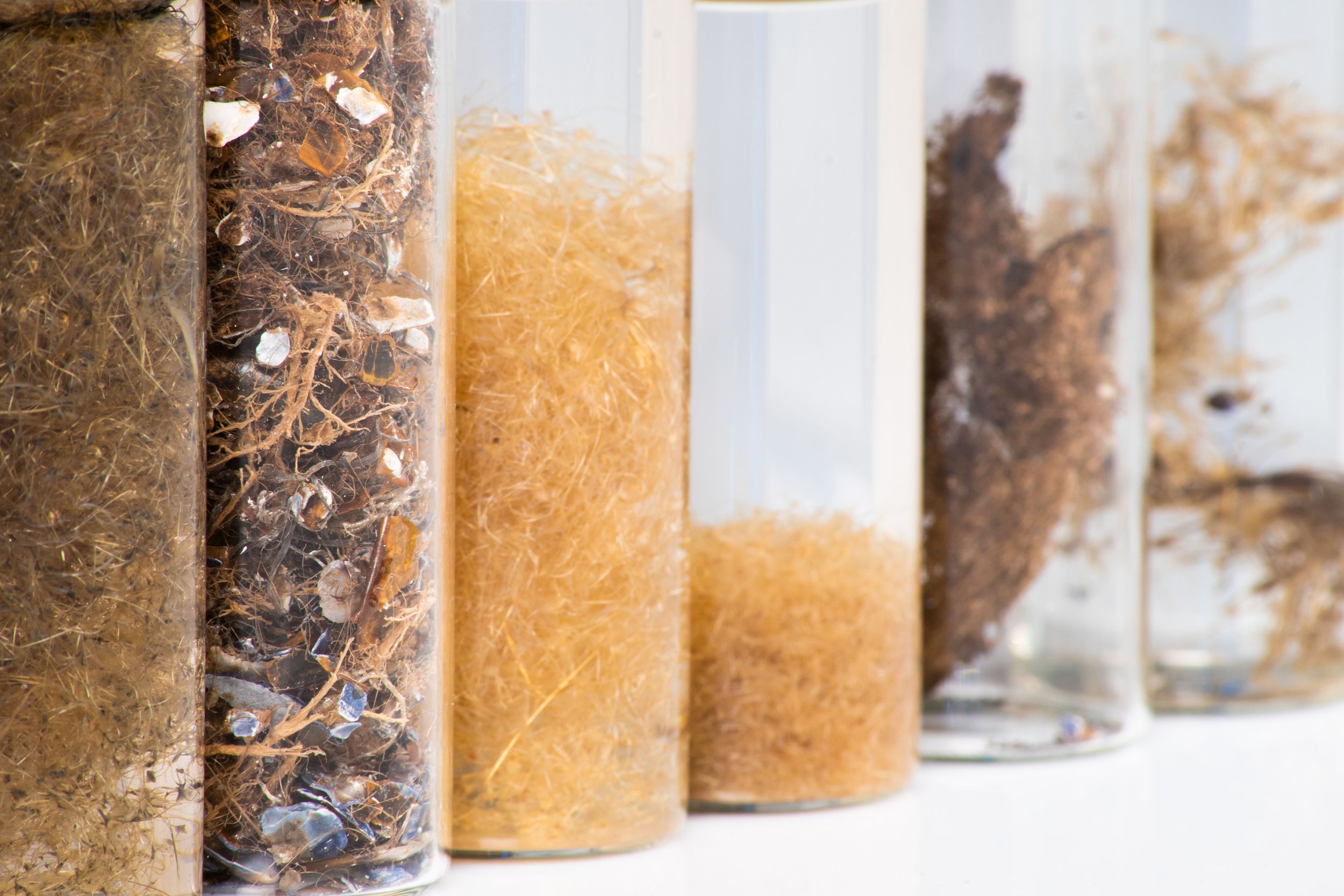Byssus, also known as mussel beards.
Byssus filaments are natural fibres created by certain kinds of marine and freshwater bivalve mollusks, which use the byssus to anchor themselves to rocks, substrates, or seabed.
In edible mussels, the byssus, also known as the "beard," is a part of the mussel that is inedible and is typically removed before cooking or packaging. The byssus is a complex structure made up of several collagenous threads that are arranged radially from a central stem. Each thread consists of three distinct regions. The proximal region, located near the mussel's body, is corrugated in nature. It is followed by a longer, smooth distal region that connects the proximal region to the adhesive plaque. The adhesive plaque itself is responsible for securely anchoring the mussel to a surface.
When we received the initial waste sample in April 2021, it was unclear what Byssus could become.
In year one of our research efforts, we embarked on a meticulous testing process for hundreds of samples collected from an original specimen to uncover the true properties of byssus. Our careful analysis and examination allowed us to reveal the unique characteristics of this natural material. Building upon this knowledge, in year two we focused on finding an eco-friendly solution to address the issue of processing highly polluted mussel waste. After countless experiments, we successfully developed an eco-friendly treatment process that effectively cleanses large quantities of this waste and transforms the byssus fibres into a uniform and homogeneous material. By developing an innovative fibre-processing technology, we have further revolutionised this byssus material, turning it into a cloud-like substance that we refer to as 'Seawool'. This breakthrough in textile innovation exemplifies our commitment to sustainability and our passion for transforming aquaculture by-products into valuable and environmentally friendly materials for the construction and textile industry.
Why Byssus?
Byssus fibres possess great potential as high-value and long-lasting materials in the international construction market. Not only do they offer unique acoustic and insulation properties, but they also contribute towards achieving multiple Sustainable Development Goals. By harnessing the unique properties of byssus fibres, the construction sector can contribute to the development of sustainable cities by utilising eco-friendly materials. Moreover, the cultivation of byssus fibres can generate decent work opportunities and foster economic growth in coastal communities, thus promoting social equity. By embracing responsible consumption and production practices, the use of byssus fibres reduces the environmental footprint of the construction industry. Lastly, by sourcing the fibres sustainably, we ensure the preservation and sustainable use of marine resources, thereby safeguarding the health of our marine ecosystems. Byssus fibres offer a promising avenue for aligning construction practices with sustainable development goals.


